Safety drills are an essential part of our seafaring life at sea. At one point in our careers, we all experience emergencies in one form or another.
My first one was a fire in the swimming pool while discharging gasoline in the Port of Amsterdam. Fortunately, I managed to survive and live on to tell the tale. It’s all thanks to the constant training and drills we have on board.
Nobody knows what the next crisis will look like or how it will hit us. It might be fire, grounding, or even an abandon ship.
To control this uncertainty, ships conduct safety drills where all the crew members stop their daily work and partake in that exercise.
What are safety drills?
Safety drills are onboard simulations of emergency scenarios in which the crew participates by following pre-defined procedures to mitigate or control the crisis.
Drills also help us familiarize the use of different tools and equipment.
We will know how to launch a lifeboat, wear a fireman’s outfit, use fire extinguishers, operate oil spill pumps, and many others.
If these tasks are too much for you, they are not actually overwhelming.
Every crew has its own assigned function in the muster list in the event of real emergencies. Safety drills make them more accustomed to those duties.
When real disasters happen, they know what to do to save their ship.
For example, fire drills.
On that drill, the ship’s crew is divided into squads that perform specific functions.
There is a team that directly extinguishes the fire, a backup team that assists them, another group that closes off ventilation, and a squad for treating the wounded.
Why are drills important onboard ships?
Drills give us a sense of “automatic” function in the event of an emergency. You become alert and more prepared to tackle the distress instead of running directly to the lifeboat.
To explain it better, try reminiscing a few events in your life.
Did you have an awful experience where you sat down in shock while processing a terrible situation?
Maybe a bus running at 100kph almost hit you, or a bolt of lightning struck a few feet from your location.
Those events are traumatizing.
But if we have proper training in handling those kinds of scenarios, the effects won’t be as devastating.
Instead, we can act logically and probably be able to help those who are unfortunate.
Safety drills onboard provide similar results.
It prepares us against any scenario so that even if an emergency alarm goes off in the middle of the night, we can respond better and have control of the situation.
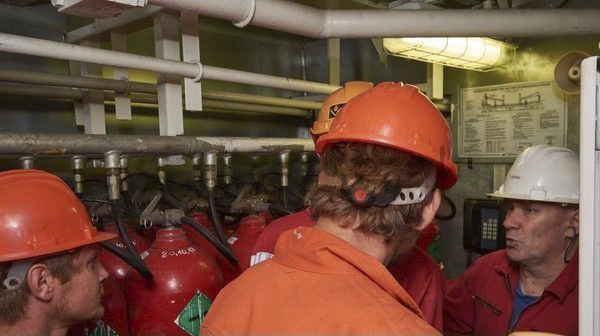
How many safety drills are there in a vessel?
Ships have “counter-attacks” to every possible emergency on board.
Part of a ship’s safety management system is the list of emergencies and the safety drills that seafarers must do as part of their familiarization.
The number of drills depends on the type of ship and her trading area. You most certainly won’t have a drill for the “Release of toxic gases” if you are on passenger ships.
Here is a list of safety drills on board that seafarers do:
- Abandon Ship Drill
- Fires and Explosions Drill
- Grounding/Stranding and touching the bottom
- Collision, Flooding, and Excessive Lists
- Heavy Weather Damages
- Salvage/Rendering Assistance/Towing
- Damaged Stability & Stress Considerations
- Oil Spill Drill (Also called SOPEP Drill)
- Chemical Spill Drill
- Emergency Steering Drill
- Man Overboard Drill
- Rescue from Confined Spaces Drill
- Serious illnesses, injuries, or Death
- Helicopter Emergency Drill
- Piracy and Armed Robbery Drill
- Critical Bridge Equipment Failure Drill
- Toxic Gas Release Drill
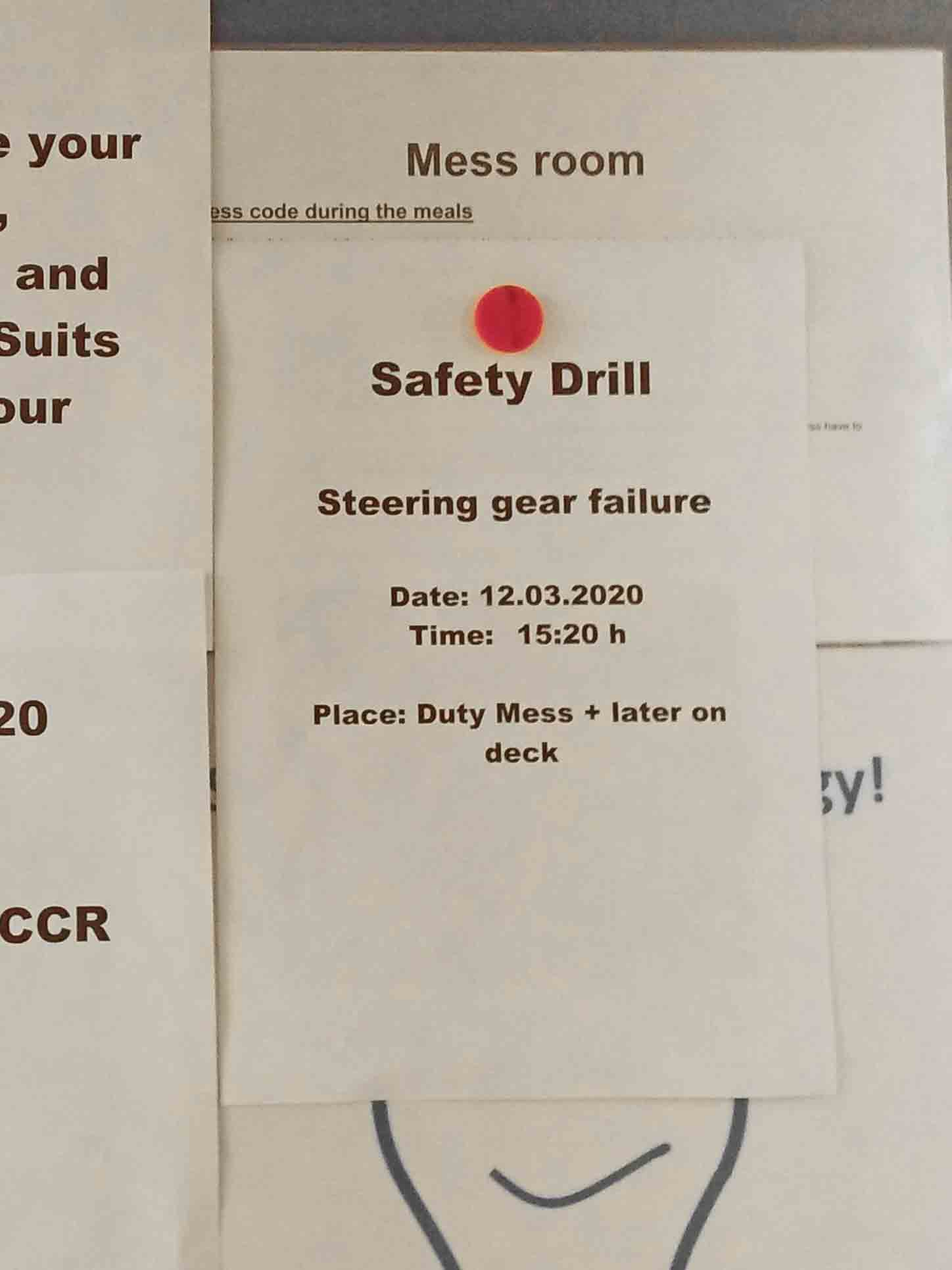
When should shipboard drills be conducted?
We now understand how vital these drills are on every ship. However, this does not mean that we should conduct all of them every week or every month.
Doing so may leave the ship’s maintenance at bay which could lead to problems or emergencies.
Thus, these safety drills are conducted on a scheduled basis. The frequency depends on the type of drill and the company’s policy.
Fire drills and abandon ship drills are made every month on cargo ships. But they can also be conducted any day within 24 hours after leaving port if 25% of the ship’s crew has changed.
On passenger vessels and cruise liners, fire and abandon ship drills are executed every week.
Piracy security drills and abandon ship drills are also performed monthly, including rescue from enclosed spaces.
Safety drills mentioned above have quarterly schedules or even bi-annual timetables.
However, they can be performed at any time or on the first opportunity especially if a particular event shocks the maritime world.
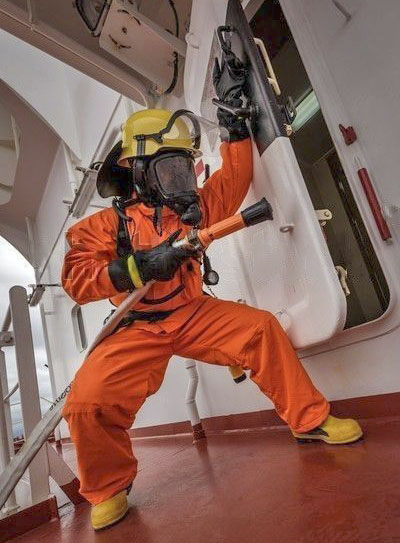
Safety Drills Versus Real Emergencies
You are probably still curious about our ship’s swimming pool catching fire and think I’m exaggerating. But I’m not.
The pool was filled with three months’ worth of garbage. When it started burning, the smoke went into the engine room after getting sucked into the blowers.
Interestingly, the fire alarm or general emergency alarm did not sound off. Only one of the engine crew noticed it and quickly ran aft.
He was banging the alleyways while shouting, “FIRE AFT! FIRE AFT! FIRE AFT…!”
We were in the cargo control room discharging our cargo. When we heard him, it was every man for himself.
Even the fire-fighting was not according to what we practiced.
One guy took a portable powder extinguisher while another used fire hoses. It was over in a minute.
When we read the report after the incident, I was surprised we sounded the fire alarms, made mustering, donned BA outfits, and all those procedures when in fact, none of those happened.
In another setting, our garbage container was smoking hot but got immediately under control.
The crew holding the radio was trembling. His voice was stuttering and his words were difficult to understand while reporting the event to the bridge.
Some reports also highlighted a missing crew during mustering when an explosion on deck occurred. He was found inside the freefall lifeboat well strapped and ready to drop off.
Even the captain of the Costa Concordia abandoned the ship after the vessel hit solid rocks and capsized.
Are drills on ships effective?
In the papers, you may likely find reports of either the successful handling of an emergency or its mishandling.
Real emergencies are more terrifying and everything we learned from the book will mostly fly out the window.
The crew may find it difficult or impractical to gather at the muster station.
Even the donning of regular Personal Protective Equipment (PPE) like safety shoes, overalls, and helmets is forgotten.
But this doesn’t mean drills are totally useless.
The reason why we deviate from the regular procedures in drills is that it catches us off guard and the person assigned to a specific duty is still not around.
Waiting for him or going to the muster station will waste time when you know that you can extinguish the fire on the spot with a nearby firefighting equipment.
Safety drills already prepared us for such emergencies that’s why we can perform many tasks not assigned to us in the muster list during practice.
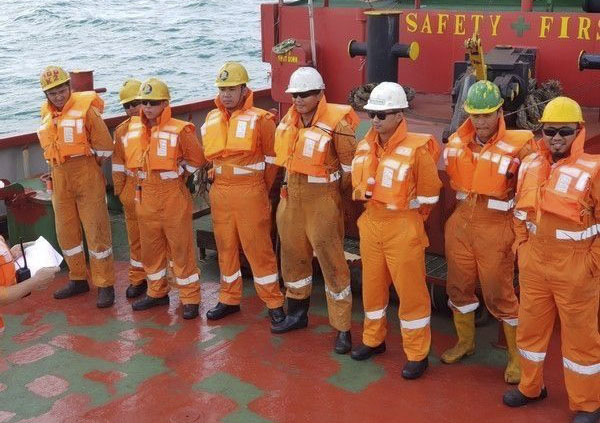
For those who lost their senses, it’s human nature that triggers that reaction.
If we can’t avoid this case, it is still much better to have one crew panic and forget their assignment than the whole ship cramming into chaos.
May the winds be in your favor

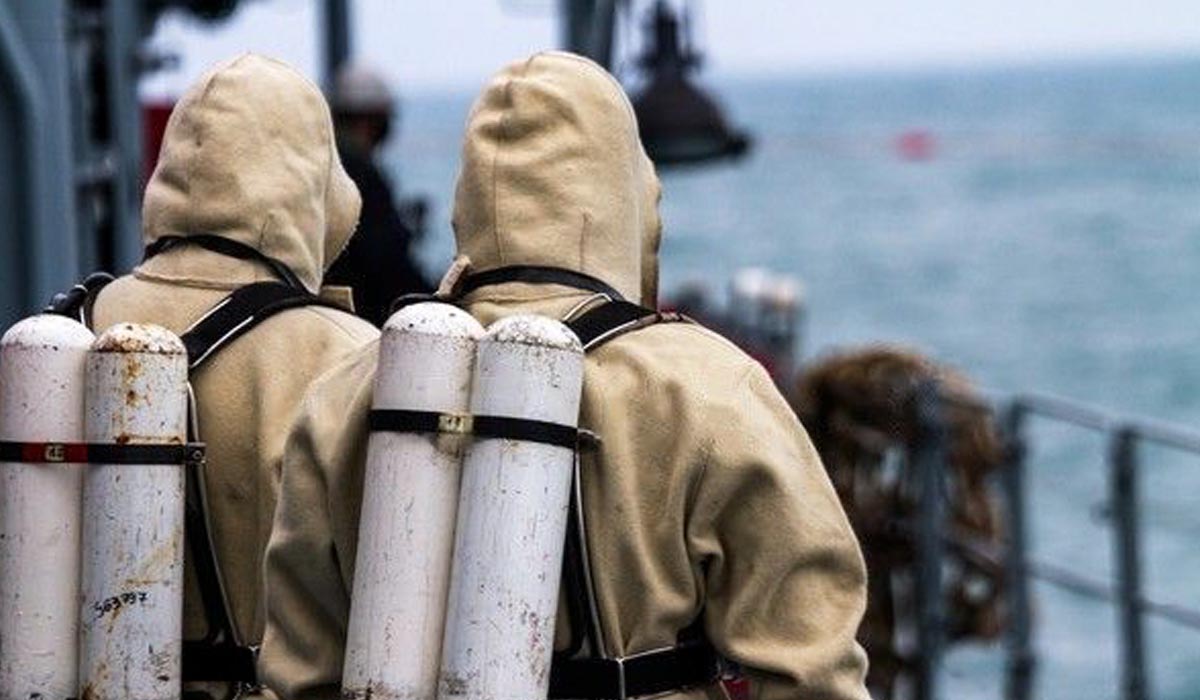
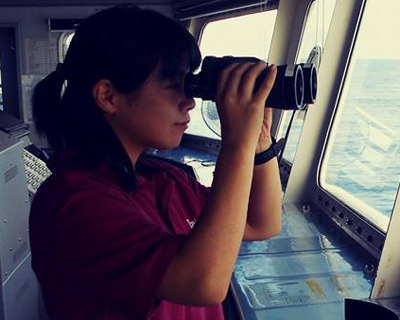
0 Comments